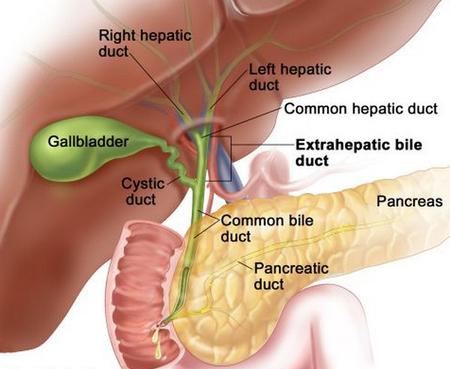Cholecystectomy in Iran
Search and Compare the Best Clinics and Doctors at the Lowest Prices for Cholecystectomy in Iran

Find the best clinics for Cholecystectomy in Iran
No clinics available
Ukraine offers the best prices Worldwide
Price: $ 853

- Home
- Iran
WHY US?
At Medijump, we're making medical easy. You can search, compare, discuss, and book your medical all in one place. We open the door to the best medical providers worldwide, saving you time and energy along the way, and it's all for FREE, no hidden fees, and no price markups guaranteed. So what are you waiting for?

Free

Best Price

Widest Selection

Risk-Free
What you need to know about Cholecystectomy in Iran

Cholecystectomy, also known as gallbladder removal, is a surgical procedure performed to remove the gallbladder. Your gallbladder is a small, pear-shaped organ in your tummy that stores bile – the digestive fluid that helps break down food. This surgery is performed if you have painful gallstones, which are small stones that form in your gallbladder due to an imbalance in the way your gallbladder works. Cholecystectomy is very common and around 80% of people who have gallstones will need to undergo this surgery. The necessity for a Cholecystectomy in can vary based on your specific symptoms and general health condition.
What is the cost of Cholecystectomy in Iran?
The expense involved in a Cholecystectomy in Iran can fluctuate due to many aspects like the surgeon's proficiency, the facilities of the hospital, and the overall health status of the patient. Utilizing health insurance benefits can help to alleviate some of the financial burden linked to the medical treatment. Having a comprehensive knowledge of what your insurance plan covers is critical before deciding to go ahead with the surgery.
In addition to the primary operation cost, it's vital for individuals to contemplate the post-procedure care and medication expenses involved during the recovery stage. The scale of these costs can differ based on the particular necessities of every patient. Discussing these potential costs with your health care professional is highly recommended to ensure you're well-prepared financially.
What does a Cholecystectomy Procedure Involve?
There are two techniques to perform cholecystectomy: Laparoscopic and open surgery. Laparoscopic is minimally invasive, meaning your surgeon only makes small incisions to insert a tube with a tiny camera and surgical tools into your abdomen. With open surgery, your surgeon makes a bigger incision in your abdomen below your ribs. Both procedures are performed under general anesthetic.
How Long Should I Stay in Iran for a Cholecystectomy Procedure?
Depending on which technique your surgeon used, you may need to stay in the hospital for 1 to 3 days. The stay might be extended if any complications arise during surgery or the recovery period. Plan to stay in Iran for around 1 to 2 weeks for initial recovery and for follow-up check-ups.
Some surgeons use dissolvable stitches to close the incisions, but if yours does not, the stitches may be removed within 7 days following the surgery. It is recommended that patients discuss their travel plans with the healthcare provider conducting the Cholecystectomy to ensure they have an accurate time frame.
What's the Recovery Time for Cholecystectomy Procedures in Iran?
The length of the recovery period depends on which technique you underwent. Generally, patients undergoing a laparoscopic cholecystectomy can expect a faster recovery time compared to those undergoing an open cholecystectomy. For laparoscopic surgery, you may be able to go back to work and return to your daily routine within 1 to 2 weeks. The time that your body needs to heal after open surgery is a lot longer, usually around 6 to 8 weeks.
What sort of Aftercare is Required for Cholecystectomy Procedures in Iran?
Post-Cholecystectomy, having a robust recovery plan is vital for achieving the best healing outcomes. This encompasses managing potential discomfort or pain effectively, maintaining the operation wound clean and dry, and slowly taking up routine activities under your healthcare provider's instructions. Adapting to a nourishing diet is equally essential since removing the gallbladder can impact the body's digestion capability of certain foods.
Frequent consultations with your medical professional for predetermined check-ups are needed to observe your recovery and confirm there are no complications post-surgery. Moreover, refraining from vigorous activities and heavy lifting for several weeks after the procedure is recommended. Bear in mind that the journey to recovery and attaining complete health post-surgery necessitates adherence to the fundamental aftercare steps suggested by your healthcare provider.
What's the Success Rate of Cholecystectomy Procedures?
The effectiveness rate of Cholecystectomy is predominantly high. The treatment, particularly through laparoscopic means, is deemed as a secure and efficient solution for conditions related to the gallbladder. As per numerous studies, the comprehensive success rates are above 90%, with minimal complications, thus supporting the respective medical research.
Nonetheless, it's crucial to note that every patient's health condition is distinctive, and the success ratio may vary individually. Elements like the patient's overall wellbeing, the intensity of gallbladder disease, and the surgeon's skill set can influence the outcome. Discussing these aspects with your healthcare provider is always suggested to gain a precise understanding of your personal prognosis.
Are there Alternatives to Cholecystectomy Procedures in Iran?
While Cholecystectomy is a frequently chosen surgical procedure to treat gallbladder diseases, there are alternatives available. The alternatives often depend on the severity of the symptoms and the overall health of the patient. Some alternatives include changes in diet and lifestyle, medications to dissolve gallstones, or nonsurgical treatments that break down gallstones. It is highly recommended to discuss all possible options with your healthcare provider to determine the best course of action for your situation.
Even though these alternatives can be effective, they may not be suitable for everyone. Medications may not always be successful in dissolving gallstones, and even if they do, the stones could recur once the treatment is stopped. Additionally, nonsurgical procedures may have restrictions depending on the size and number of gallstones present.
What Should You Expect Before and After the Procedure
Prior to the operation, your healthcare professional will carry out a comprehensive health assessment to evaluate your suitability for the surgery. This can encompass blood investigations and imaging techniques, such as ultrasounds or CT scans. You might be instructed to observe fasting overnight and refrain from certain medications that could potentially affect the operation.
After the Cholecystectomy, experiencing some discomfort or pain around the operated area is ordinary. Feeling lethargic or drowsy may occur as an effect of anesthesia. Adequate pain management and wound care are crucial during this phase. Initially, you may need to adhere to a light, low-fat diet and slowly reincorporate regular foods. It's important to maintain consistent visits to your healthcare provider in the weeks post-surgery to keep a check on your recovery and to swiftly manage any complications that might emerge.
What are the Potential Risks of Cholecystectomy?
While Cholecystectomy is a routinely conducted and usually secure operation, it, like any surgical intervention, carries potential risks. These could encompass bleeding, infections, damage to adjacent structures, and adverse reactions to anesthesia. Rarer, yet possible complications include the emergence of bile leaks or blood clots. Being aware of these risks primes you better for care following surgery.
It's worth noting that certain factors, such as the patient's age, overall wellbeing, and presence of other health conditions, can impact the levels of risk.
Whilst the information presented here has been accurately sourced and verified by a medical professional for its accuracy, it is still advised to consult with your doctor before pursuing a medical treatment at one of the listed medical providers
No Time?
Tell us what you're looking for and we'll reachout to the top clinics all at once
Enquire Now

Popular Procedures in Iran
Prices Start From $32

Prices Start From $260

Prices Start From $2,487

Recommended Medical Centers in Iran for procedures similar to Cholecystectomy

- Interpreter services
- Translation service
- Religious facilities
- Medical records transfer
- Medical travel insurance
- Health insurance coordination
- TV in the room
- Safe in the room
- Phone in the room
- Private rooms for patients available

- Interpreter services
- Translation service
- Religious facilities
- Medical records transfer
- Medical travel insurance
- Health insurance coordination
- TV in the room
- Safe in the room
- Phone in the room
- Private rooms for patients available

- Interpreter services
- Translation service
- Religious facilities
- Medical records transfer
- Medical travel insurance
- Health insurance coordination
- TV in the room
- Safe in the room
- Phone in the room
- Private rooms for patients available
Cholecystectomy in and around Iran
Introduction
Iran is a country situated in Western Asia, as well as the second-largest in the Middle East. It is home to one of the oldest civilizations in the world, starting from the fourth millennium BC when the Elamite Kingdoms were formed. Iran is widely known as the jewel in Islam’s crown, filled with awe-inspiring architecture and friendly people. The country is also a popular medical tourism destination due to its efficient healthcare system and experienced specialists. The medical centers in the country keep pace with the latest medical developments and provide top-class services. International medical tourists usually come to Iran for cosmetic procedures, which are currently witnessing a vast growth. Cosmetic procedures in the country, such as rhinoplasty and hair transplant, are performed with advanced scientific techniques and are highly successful. Furthermore, the healthcare cost in the country is a lot more affordable than in many other Western countries.
Popular Cities and Regions in Iran
The capital of Iran, Tehran, is the most populous city in the country. Situated at the foot of the snow-capped Alborz mountain range, the city is filled with museums, restaurants, parks, and friendly people. The most popular landmark in this city is the Azadi Tower, which is the symbol of the city. Besides this tower, visitors can also go to the Tehran City Theater to see its amazing architecture, explore the Treasury of the National Jewels to admire the largest collection of jewels found in the world and visit the Golestan Palace, which is the oldest historic monument in Tehran. Besides Tehran, Tabriz is another popular city and it is a modern industrialized city with a very rich history and historical monuments, such as the Blue Mosque and El Goli.
Transport in Iran
The main international airport is the new Imam Khomeini International Airport in Tehran. It serves international flights to and from numerous cities around the world, including Dubai, Ankara, London, Bangkok, and Beijing. Budget airlines are operating from this airport, such as Pegasus Airlines and Air Asia. To get around Iran, domestic flights are affordable and fast. Buses and trains are also widely available with extensive networks. Taxis are best for inter-city travel.
Visas in Iran
Iran allows citizens of 16 countries to visit without a visa for up to 90 days, including Armenia, China, and Malaysia. Most citizens of other countries can obtain a visa on arrival. However, visa on arrival does not apply to citizens of 14 other countries, such as the US and the UK.
Weather in Iran
Iran experiences four seasons. Spring (March-May) and autumn (September –October) are pleasant with mild temperatures. Summer (June to August) can be scorching hot, with the temperatures soaring to 37°C. The winter can get bitterly cold as the temperatures drop to 0°C.
Additional Info
- Local Currency: The official currency is the Iranian rial (IR). 1 USD is approx. 41,921 IR.
- Money & Payments: You cannot use ATMs, credit or debit cards, or traveler's cheques in Iran. Therefore, bring all you’ll need in cash.
- Local Language: Persian is the official language in Iran. However, the country has several main languages, including Azerbaijani and Kurdish. Not many people speak English in the country.
- Local Culture and Religion: About 99% of Iran’s population is Muslims, with the Shia branch of Islam as the biggest. The two largest non-Muslim religious minorities are Christianity and Bahá'í Faith.
- Public holidays: Islamic Revolution Day, Nature Day, Eid e-Fitr, and Eid-e-Qorban are some of the most important public holidays in Iran.
Popular Searches
- Plastic Surgery in Thailand
- Dental Implants in Thailand
- Hair Transplant in Thailand
- Breast Augmentation Thailand
- Gastric Sleeve in Thailand
- Gender Reassignment Surgery in Thailand
- Laser Hair Removal in Bangkok
- Botox in Bangkok
- Dermatology in Bangkok
- Breast Augmentation in Bangkok
- Coolsculpting in Bangkok
- Veneers in Turkey
- Hair Transplant in Turkey
- Rhinoplasty in Turkey
- Stem Cell Therapy in Mexico
- Rhinoplasty in Mexico
- Liposuction in Mexico
- Coolsculpting in Tijuana
- Rhinoplasty in Korea
- Scar Removal in Korea
- Gastric Sleeve in Turkey
- Bone Marrow Transplant in India
- Invisalign in Malaysia
- Plastic Surgery in the Dominican Republic
- Tummy Tuck in the Dominican Republic
- Plastic and Cosmetic Surgery in Poland
- Rhinoplasty in Poland
- Hair Implant in Poland
- Dental Implants in Poland
- IVF in Turkey